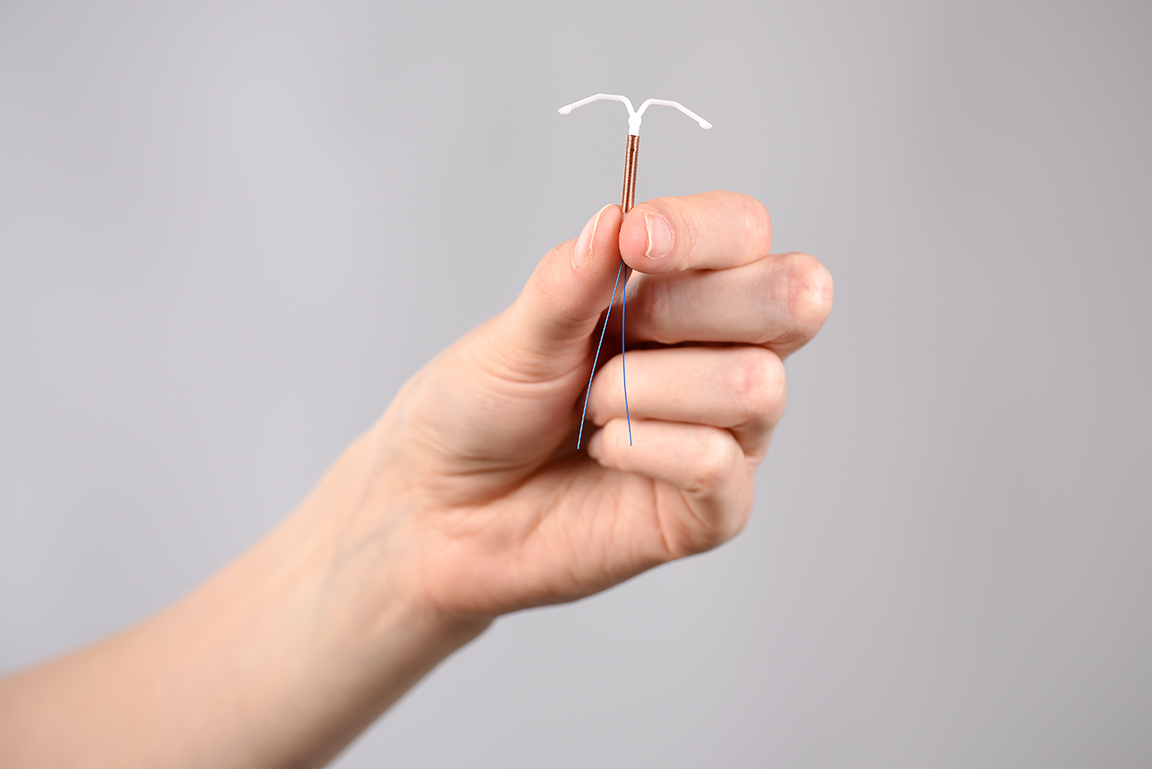Copper coil (IUD)
A copper intrauterine device (IUD) is a small T-shaped plastic and copper device. It’s also called the copper coil.
There are different types of IUD, some with more copper than others. IUDs with more copper are more than 99% effective. This means that fewer than 1 in 100 people who use an IUD will get pregnant in one year. IUDs with less copper will be less effective.
It’s inserted into your womb (uterus) by a doctor or nurse to prevent pregnancy. It does not protect you against sexually transmitted infections (STIs).

How an IUD works
An IUD works in a different way from the IUS (intrauterine system).
It works for 5 to 10 years.
An IUD prevents pregnancy by releasing copper into the womb which:
- makes it difficult for sperm to get to an egg
- thins the womb lining, so there’s less chance an egg will attach to it
If you’re 40 or over when an IUD is fitted, it can be left in until you reach menopause or no longer need contraception.
It’s safe to use any period product (including a tampon or menstrual cup) with an IUD.
When it starts to work
You can have an IUD put in at any time during your menstrual cycle, as long as you’re not pregnant.
After giving birth
You can have an IUD fitted within 48 hours of giving birth.
If it’s not fitted within 48 hours you can have it fitted 4 weeks after the birth. Until then you should use a different method of contraception, such as condoms.
An IUD is safe to use while you’re breastfeeding.
After a miscarriage or abortion
An IUD can be fitted immediately after a miscarriage or an abortion. You’ll be protected from pregnancy straight away.
Having an IUD fitted
Before your IUD is fitted, a doctor or nurse will check inside your vagina to check the position and size of your womb.
You may also be tested for any infections, such as STIs.
Your appointment should take 20 to 30 minutes, and fitting the IUD should take no longer than 5 minutes.
During the fitting process:
- your vagina is held open like it is during a smear test
- the IUD is put in through the cervix, into the womb
Having an IUD fitted can be uncomfortable or painful. You may experience cramps and bleeding for a few days after having an IUD fitted.
You can ask for a local anaesthetic to help. You can also take painkillers before and after having an IUD fitted.
Once your IUD is fitted, you may be advised to get it checked by your doctor or nurse after 3 to 6 weeks to make sure everything is OK.
Speak to your GP if you or your partner are at risk of getting an STI, as this can lead to infection in the pelvis.
Speak to your GP practice or the clinic if you have:
- pain in your lower tummy (abdomen)
- a high temperature
- smelly discharge
How to tell it’s still in place
An IUD has 2 thin threads that hang down slightly from your womb into the top of your vagina.
The health professional that fits your IUD will show you how to feel for these threads and check that the IUD is still in place.
Check your IUD is in place after 4 weeks or after your first period. Then check after each period.
It’s unlikely that your IUD will come out, but if you can’t feel the threads or if you think the IUD has moved, you may not be protected against pregnancy.
Speak to your doctor or nurse and use additional contraception such as condoms until you’ve had your IUD checked.
If you’ve had sex recently, you may need emergency contraception.
Your partner should not be able to feel your IUD during sex. If they can, see your doctor or nurse for a check-up.
Removing an IUD
Your IUD can be removed at any time by a doctor or nurse.
If you’re not having another IUD put in and don’t want to become pregnant, you should use additional contraception such as condoms for 7 days before you have it removed.
You may be able to get pregnant as soon as your IUD has been taken out.
Who can use an IUD?
Most women can use an IUD, however it might not be suitable for some people. Your doctor or nurse will talk about this with you.
You should not use an IUD if you have:
- an untreated STI or a pelvic infection
- unexplained bleeding between periods or after sex
Risks of an IUD
There are some risks of using an IUD, but they are not common.
They include:
- the IUD can go through the wall of the womb (fewer than 2 in 1000)
- pelvic infection
- expulsion – the womb pushes the IUD out
- ectopic pregnancy
You should speak to your doctor or nurse about this before starting an IUD.
Where can you get an IUD?
You can get the IUD from:
- sexual health services
- GP practices that provide contraception
If you’re under 16
Anyone can get contraception for free in Scotland, even if you’re under 16.
Contraception services are confidential so the person won’t tell anyone else about it. You can ask them any questions you may have.
If you’re under 16, they might encourage you to tell your parents, but you do not have to.
The only time a professional might need to tell someone else is if they think you’re at risk of harm, such as abuse. The risk would need to be serious. They’d usually talk about it with you first.
Last updated:
05 May 2023
